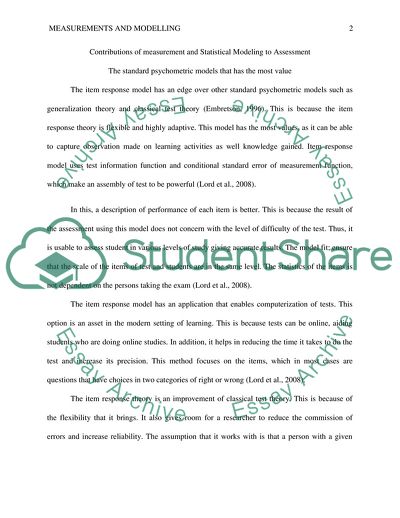Cite this document
(Contributions of Measurement and Statistical Modeling to Assessment Report Example | Topics and Well Written Essays - 1250 words, n.d.)
Contributions of Measurement and Statistical Modeling to Assessment Report Example | Topics and Well Written Essays - 1250 words. https://studentshare.org/education/1772919-contributions-of-measurment-and-statistical-modeling-to-assessment
Contributions of Measurement and Statistical Modeling to Assessment Report Example | Topics and Well Written Essays - 1250 words. https://studentshare.org/education/1772919-contributions-of-measurment-and-statistical-modeling-to-assessment
(Contributions of Measurement and Statistical Modeling to Assessment Report Example | Topics and Well Written Essays - 1250 Words)
Contributions of Measurement and Statistical Modeling to Assessment Report Example | Topics and Well Written Essays - 1250 Words. https://studentshare.org/education/1772919-contributions-of-measurment-and-statistical-modeling-to-assessment.
Contributions of Measurement and Statistical Modeling to Assessment Report Example | Topics and Well Written Essays - 1250 Words. https://studentshare.org/education/1772919-contributions-of-measurment-and-statistical-modeling-to-assessment.
“Contributions of Measurement and Statistical Modeling to Assessment Report Example | Topics and Well Written Essays - 1250 Words”. https://studentshare.org/education/1772919-contributions-of-measurment-and-statistical-modeling-to-assessment.


